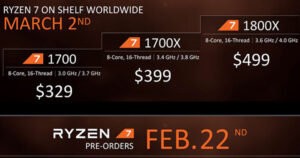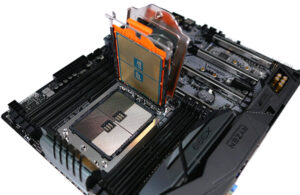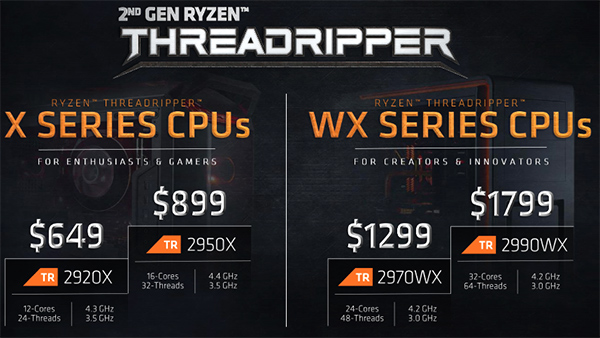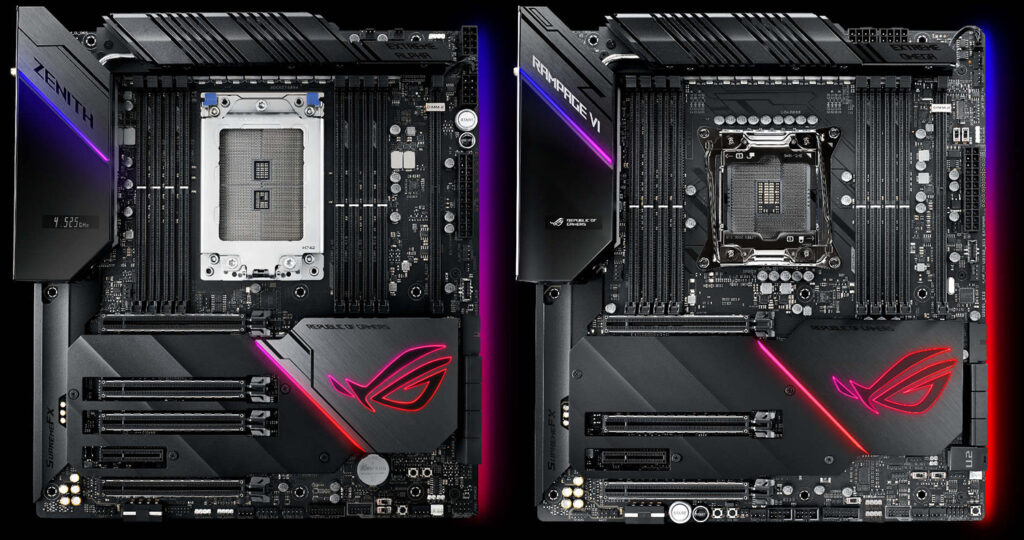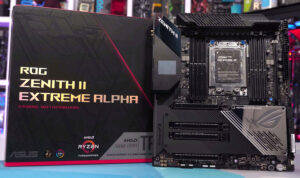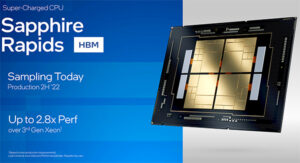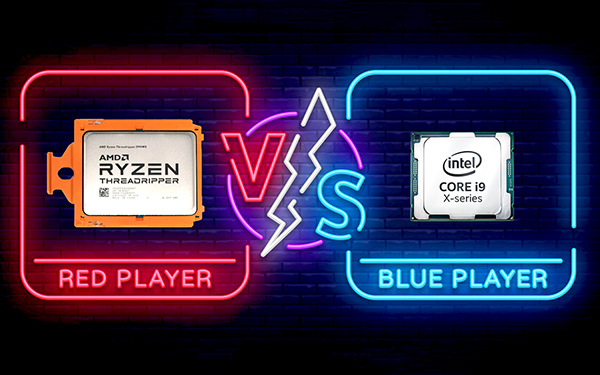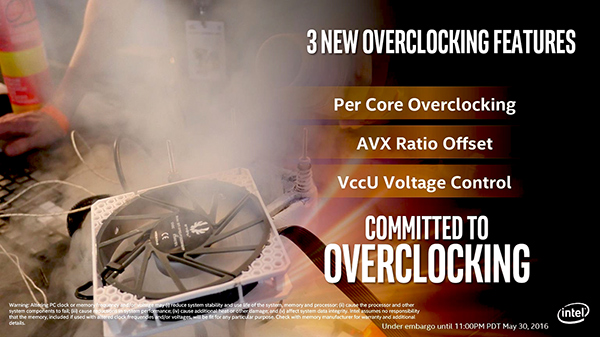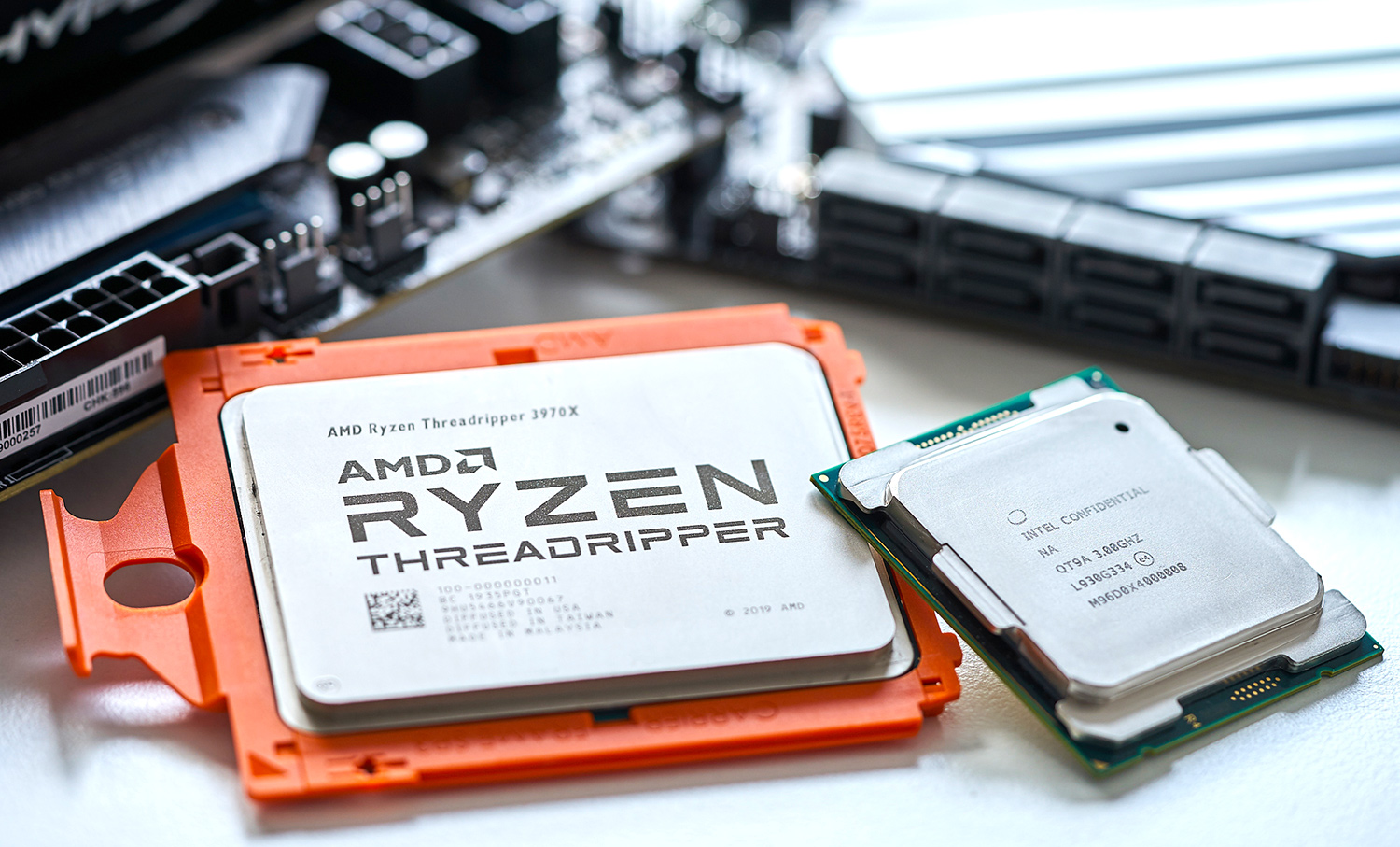The History of the HEDT x86 PC – Part 2 – AMD
AMD’s debut in the HEDT market
Part 2 of the History of the HEDT – See Part 1 (Intro + Intel)
The debut of the AMD High-End Desktop platform happened in the fall of 2017. For his main competitor, he was unexpected and even shrouded in some mystery. In March 2017, the first models of the AMD Zen microarchitecture processors appeared on store shelves, they were the first Ryzen, where the flagship was the 8-core AMD Ryzen 7 1800X, priced at a modest $499. At that time, Intel’s flagship in the desktop segment was the Core i7-7700K, which belongs to the Kaby Lake microarchitecture and had only 4 cores capable of processing 8 threads. The cost of the Core i7-7700K was then $350. The new six-core new flagship Coffee Lake microarchitecture Intel Core i7-8700K would only appear six months later at a price of $370.
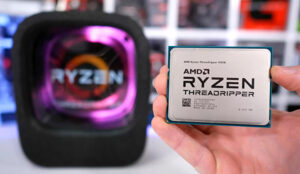 AMD planned to release processors with the ZEN microarchitecture for the desktop, mobile and server markets, it did not originally plan to release HEDT processors.
AMD planned to release processors with the ZEN microarchitecture for the desktop, mobile and server markets, it did not originally plan to release HEDT processors.
The appearance on the market of AMD Ryzen Threadripper processors has been shrouded in mystery. According to one version, the merit of their appearance lies with the enthusiasm of a small group of AMD engineers who, in their spare time from their main work, experimented with creating a high-performance processor that could be even more productive than the desktop Ryzen. A group of enthusiasts have been working on this project for about a year, and at the end of the work they presented their developments to the company’s management, which, in turn, considered them promising and allocated the necessary funding for commercial development.
Until May 2017, no one knew about the work on these processors, which would then be called the Ryzen Threadripper. In August 2017, the long-awaited announcement of the first HEDT platform from AMD with three models of AMD Ryzen Threadripper processors happened. The processors were installed in the new TR4 socket with a crazy number of contacts at that time, 4094 contacts. The most basic Ryzen Threadripper 1900X ran at 3.8 GHz, had 16 MB of L3 cache, and had 8 cores capable of processing 16 threads. Such a processor cost $549. The average was the Ryzen Threadripper 1920X with 12 cores and 32MB of L3 cache. Such a processor cost already $799. Twelve-core HEDT competitor from Intel with thermal paste under the cover – Core i9-7920X cost $1199. The flagship of the entire HEDT line from AMD was the 16-core Ryzen Threadripper 1950X, which was estimated at $999. Intel’s 16-core counterpart, the Core i9-7960X, was offered to enthusiasts at a price one and a half times more expensive, for $1,699.
What did AMD’s first HEDT platform offer to wealthy enthusiasts?
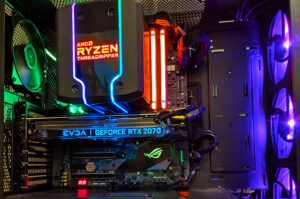 Chiplet design multi-core processors (a modern take on the MCM Multi-Chip Modules of the past) with 4094 pins per socket. All processors had an unlocked multiplier. Declared support for 2667MHz DDR4-SDRAM. The maximum supported amount of RAM was 128 GB. The processors provided their owners with 64 Gen 3 PCI Express lanes, which was more than the competitor. For all motherboards with Socket TR4, a single set of system logic was used – the X399 chipset. The superiority of the first processors was achieved in terms of L3 cache size, the number of available PCI Express lanes, and the final cost. But in terms of performance per core, HEDT processors from Intel were still ahead, although the gap was not too large. For budget-minded enthusiasts, Intel had an 18-core Core i9-7980XE processor in stock, so the first revision of the LGA2066 remained more attractive, but for the first time in a long time, enthusiasts had a choice.
Chiplet design multi-core processors (a modern take on the MCM Multi-Chip Modules of the past) with 4094 pins per socket. All processors had an unlocked multiplier. Declared support for 2667MHz DDR4-SDRAM. The maximum supported amount of RAM was 128 GB. The processors provided their owners with 64 Gen 3 PCI Express lanes, which was more than the competitor. For all motherboards with Socket TR4, a single set of system logic was used – the X399 chipset. The superiority of the first processors was achieved in terms of L3 cache size, the number of available PCI Express lanes, and the final cost. But in terms of performance per core, HEDT processors from Intel were still ahead, although the gap was not too large. For budget-minded enthusiasts, Intel had an 18-core Core i9-7980XE processor in stock, so the first revision of the LGA2066 remained more attractive, but for the first time in a long time, enthusiasts had a choice.
It took one year for the second-generation Ryzen Threadripper to see the light of day, but the HEDT version of the platform remained the same. Following the desktop Ryzen, Threadripper also changed to the new Zen+ microarchitecture. In August 2018, two models debuted with 16 and 32 cores. The sixteen-core Ryzen Threadripper 2950X ran at a nominal frequency of 3.5 GHz and had 32 MB of L3 cache, which cost $899 at the time of the announcement. Compared to the previous 16-core version, the cost of the processor dropped $100. For 32-core models with 64 MB of L3 cache (for perspective, this was a decent amount of system RAM in the 1990’s, and a pretty nice sized hard drive in the 1980’s) and a nominal clock frequency of 3 GHz, they asked for exactly $1,799, which was comparable to the cost of a competitor’s 18-core flagship.
A little later, in October, AMD expanded its range of HEDT processors with a couple more models with 12 and 24 cores. The 12-core 3.5GHz Threadripper 2920X cost $649, while the 24-core model was $1299.
Thanks to the transition from the ZEN microarchitecture to the ZEN+, it was possible to reduce the manufacturing process of the dies from 14 to 12 nm. The officially supported frequencies of RAM have increased from 2667 MHz to 2933 MHz. There was also an increase in the clock frequencies of the processor cores, on average, the frequency increased by an additional 300 MHz, and in some cases even up to 400 MHz. Decreased inter-core delays, up to 15% to the L3 cache memory also contributed to an increase in the final performance.
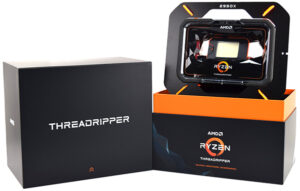 The chosen chiplet design of AMD processors allowed it to increase the number of cores to very large numbers, while remaining cheap in terms of production (and allowing much more flexibility of any dies with defective cores). Intel processors in the LGA2066 version were made from a monolithic die, the size of which could not be further increased physically. The complexity of production and the percentage of rejects in dies of this size had a negative impact on the cost and competitive advantages of the manufactured final product.
The chosen chiplet design of AMD processors allowed it to increase the number of cores to very large numbers, while remaining cheap in terms of production (and allowing much more flexibility of any dies with defective cores). Intel processors in the LGA2066 version were made from a monolithic die, the size of which could not be further increased physically. The complexity of production and the percentage of rejects in dies of this size had a negative impact on the cost and competitive advantages of the manufactured final product.
While Intel’s HEDT processors had a core price of $100, the second generation Threadripper offered its cores at $56 apiece, which made them more attractive in terms of the final cost of the processor. The second-generation Ryzen Threadripper processors would be fully compatible with the existing infrastructure and installed in the old Socket TR4 in motherboards with the X399 chipset. To work with new processors, the user only needed to update the BIOS of the motherboard. With motherboards often costing more than the base processors, this was a large plus.
In this period of time, the pendulum of competition swung strongly against Intel. In a number of tasks where brute force was needed as well as the number of cores AMD was far ahead, but in 3D benchmarks, games and even a number of tasks related to coding, the 18-core Intel flagship was still ahead of AMD. To compete with the 2nd generation Ryzen Threadripper, Intel responded with solder under the hood Skylake-X 9-series processors (allowing slightly better thermal performance, but ending the practice of delidding processors for custom cooling solutions), slightly increasing clock speeds, and the introduction of 256GB of maximum system-wide RAM support, but processor prices remained the same.
In November 2019, Intel’s dominance in the HEDT segment ended. During this period, AMD released the third generation of its HEDT platform based on the Zen 2 microarchitecture. The new 7 nm chiplet manufacturing process, the use of eight-core chiplets, and the new microarchitecture, which provided a performance increase of 15 to 18%, sent Intel to a technical knockdown. The new chiplets got rid of their own memory controllers and the PCI Express bus, these functions began to be performed by a separate 12-nm central I/O chiplet, to which the processor chiplets were connected using the Infinity Fabric bus.
Thus, the third generation AMD Ryzen Threadripper processors made the transition from a distributed to a centralized scheme for implementing a RAM controller and a PCI Express bus controller, thanks to which, now any processor core had equal access to the entire area of RAM and PCI-Express devices, which had a positive affect on the overall performance. In addition, the new processors began to support the 4th generation PCI Express bus, which, with 64 lines in the processor, opened up almost unlimited prospects in terms of supporting any peripheral.
 Due to the lack of competition already from Intel, the cost of new Threadripper increased and now AMD could dictate the terms of the game in this segment. In January 2020, the super-flagship AMD Ryzen Threadripper 3990X was released, with as many as 64 cores. For the possession of such power one had to pay a very high price – $3990. Here, even very wealthy gamers-enthusiasts-creators have thought ten times, is the game worth the cost?
Due to the lack of competition already from Intel, the cost of new Threadripper increased and now AMD could dictate the terms of the game in this segment. In January 2020, the super-flagship AMD Ryzen Threadripper 3990X was released, with as many as 64 cores. For the possession of such power one had to pay a very high price – $3990. Here, even very wealthy gamers-enthusiasts-creators have thought ten times, is the game worth the cost?
As you can see, the battle in the HEDT sector has gone very far, and the lack of competition has had a negative impact on the final cost of products. AMD had plans to release the next generation of its HEDT platform, thanks to the transition of chiplets to the Zen 3 microarchitecture. The new AMD Ryzen Threadripper 5000 series was supposed to be released back in 2021, but the lack of production capacity, strong demand for the previous generation of processors and lack of competition, forced AMD to abandon (or at least delay) their plans.
Future of HEDT
This year (2022) we are waiting for the climax of this amazing story. Intel successfully mastered the 10 nm manufacturing process, successfully switched to the new Golden Cove microarchitecture, DDR5-SDRAM and the 5th generation PCI-Express bus. Alder Lake-S desktop processors proved to be fast enough thanks to the new microarchitecture and the use of advanced technologies.
The fifth generation HEDT platform from Intel should be based on processors belonging to the Sapphire Rapids generation. The processors will have a chiplet design and it is assumed that the number of cores in the maximum configuration can reach 56 or even 60 cores (interestingly now approaching the core count of the old Pentium P55 core derived Xeon Phi processors).
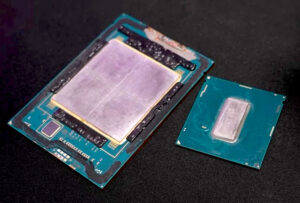 According to another version, the new HEDT platform may include Alder Lake-X processors, which will offer more cores compared to Alder Lake, as well as eliminate unnecessary low-performance E-cores. If I defend things in this way, then enthusiasts may be left without support for the AVX512 instructions and the 8-channel memory controller. Intel has also announced that it is working on using HBM2e memory in its future processors, but AMD already has processors with significantly increased L3 cache memory in all market segments. In any case, AMD has something to answer right now, and the more interesting it will be what Intel decides to finally present to the hungry public in the High-End Desktop segment. The expected date for the announcement of the new HEDT platform is still scheduled for the second quarter of this year, but everything can move another couple of months to the start of the Back to School season.
According to another version, the new HEDT platform may include Alder Lake-X processors, which will offer more cores compared to Alder Lake, as well as eliminate unnecessary low-performance E-cores. If I defend things in this way, then enthusiasts may be left without support for the AVX512 instructions and the 8-channel memory controller. Intel has also announced that it is working on using HBM2e memory in its future processors, but AMD already has processors with significantly increased L3 cache memory in all market segments. In any case, AMD has something to answer right now, and the more interesting it will be what Intel decides to finally present to the hungry public in the High-End Desktop segment. The expected date for the announcement of the new HEDT platform is still scheduled for the second quarter of this year, but everything can move another couple of months to the start of the Back to School season.
Conclusion
The first generation of Intel’s High-End Desktop PC got off to a strong start. But over time, the gap between the desktop and HEDT widened noticeably, and in the absence of competition, prices reached their new ceiling. At this point in time, AMD and Intel have switched places and enthusiasts interested in this issue are looking forward to the summer to understand what to prepare for and what amounts to count on.
If we consider HEDT from the point of view of an overclocker enthusiast, then Intel’s solutions look more attractive even now, despite the smaller number of available cores. The 10th generation of Cascade Lake-X, despite its venerable age, still provides good performance and a high percentage of overclocking. Additional excitement comes from overclocking a 4-channel RAM subsystem operating at a frequency of 4 GHz and, in some cases, higher, and the ability to fine-tune the RAM timings. Overclocking a mesh network or system bus also brings a nice performance boost. AMD Ryzen Threadripper processors have many times the worst overclocking potential, so it’s good if you can squeeze out a few hundred extra megahertz across all cores. In this regard, these are more “boring” processors, and I personally choose HEDT from Intel for these purposes, because excitement and sports interest for an overclocker is more important than a larger number of cores.
In terms of the right investment for the future, the HEDT platform offers more options than the desktop. You will get more expandability options from it, since the number of PCI-Express lanes and RAM slots is in excess here, in relation to the desktop segment. The possibility in the future to increase the number of cores exceeding the desktop segment is also available. But if you play games and have only one video card from expansion boards, then this is clearly not the platform you need.
Article by max1024
Edited by CPU Shack


